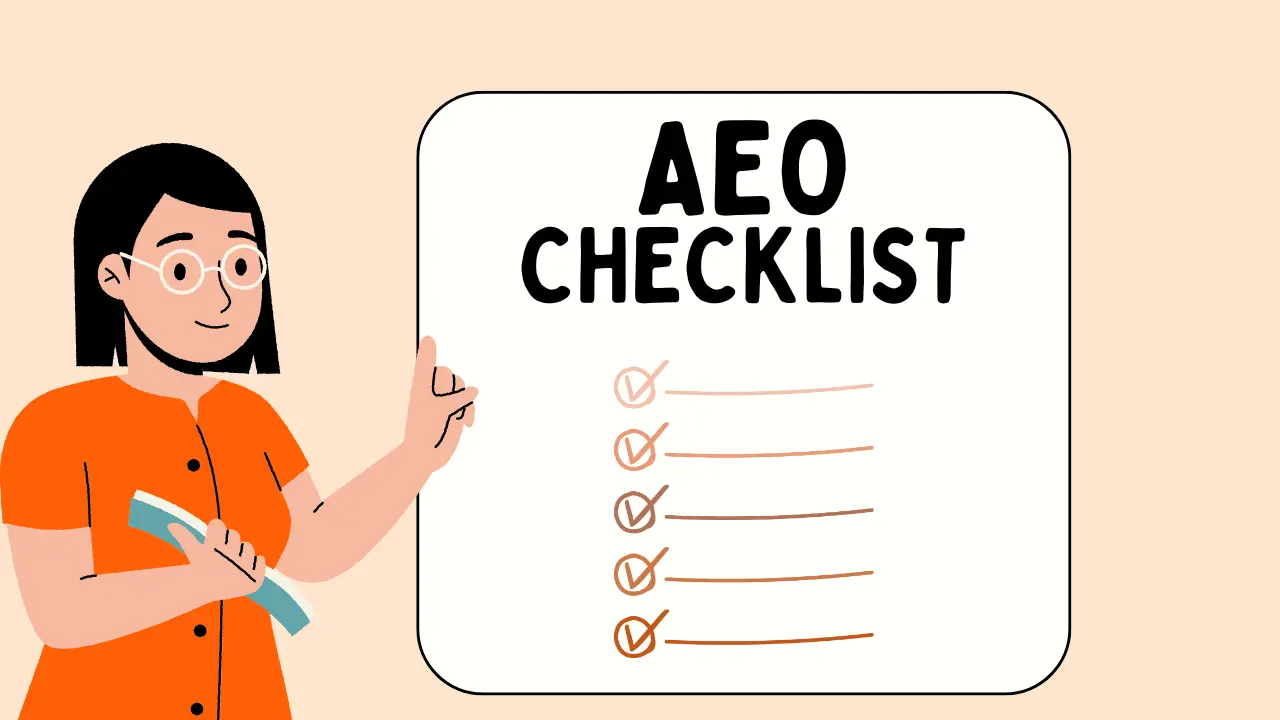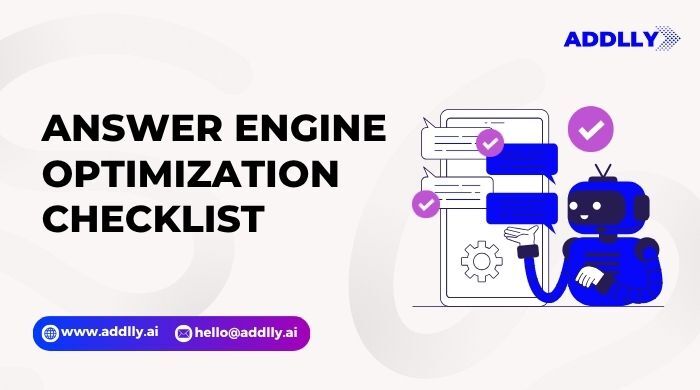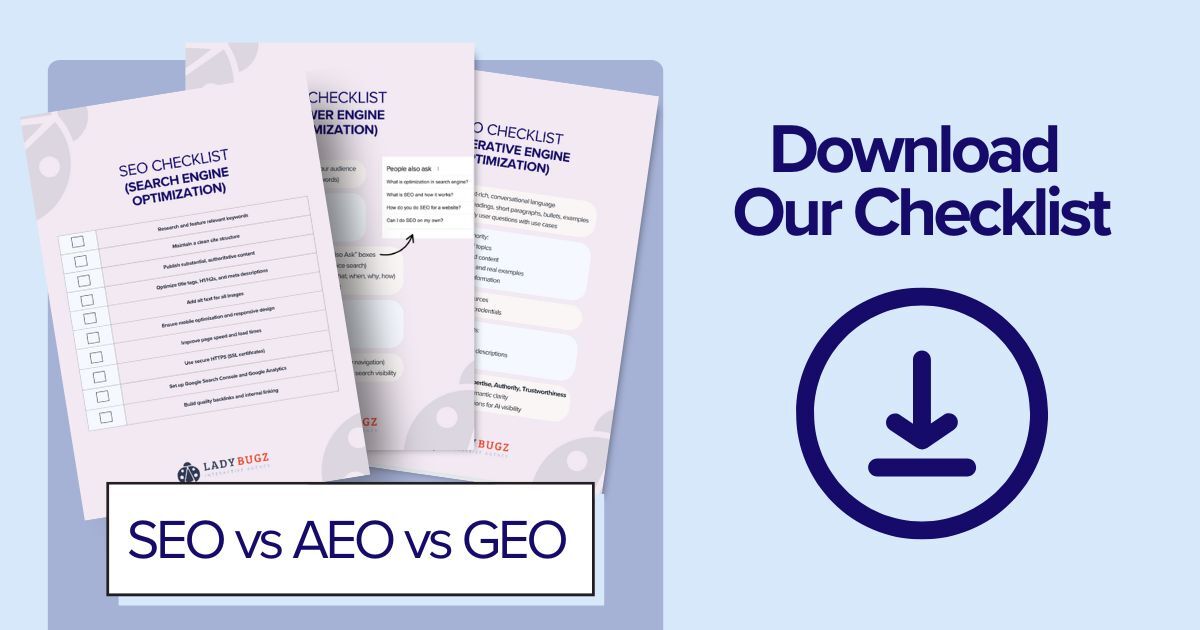Hey there, future digital superstar! Noah Evans here from AskByteWise.com, and I’m thrilled you’re diving into the exciting world of Answer Engine Optimization (AEO). You’ve probably noticed that search results aren’t just a list of blue links anymore. Now, Google, Bing, and even AI chatbots like ChatGPT and Bard are trying to give you direct answers, often right at the top of the page or through a conversational interface. This shift is huge, and it means we need a new way to think about our content strategy. That’s exactly why I’ve put together this AEO checklist: to arm you with a clear, step-by-step guide to make sure your content gets noticed by these smart “answer engines.” If you’re a beginner, a student, or a small business owner feeling a bit overwhelmed by the tech jargon, don’t worry – we’re going to break down complex AEO concepts into simple, actionable steps. By the end of this guide, you’ll have a practical framework to optimize your content, satisfy user intent, and truly “Make Complex Tech Simple” for your audience and for search engines alike. Let’s get started!
What You’ll Need to Get Started with AEO
Before we dive into the nitty-gritty of the AEO checklist, let’s quickly cover the basic tools and mindset that will make your journey smoother. Think of this as preparing your kitchen before you start cooking a delicious meal – you wouldn’t want to realize you’re missing a key ingredient halfway through!
- A Clear Understanding of Your Audience: Who are you trying to reach? What questions do they have? What problems are they trying to solve? AEO is all about answering questions, so knowing your audience’s questions is paramount.
- Basic Keyword Research Tools: While AEO goes beyond traditional keyword research, understanding what terms people are searching for is still foundational. Tools like Google Keyword Planner (free), Semrush, Ahrefs, or even just Google’s “People Also Ask” and “Related Searches” features will be invaluable.
- Content Management System (CMS) Access: Whether you use WordPress, Shopify, Squarespace, or another platform, you’ll need the ability to create and edit content, including headings, paragraphs, and sometimes even schema markup (don’t worry, we’ll explain!).
- Analytics Access (e.g., Google Analytics, Google Search Console): These tools help you see how your content is performing, what queries people are using to find you, and identify opportunities for improvement.
- A “Question-First” Mindset: Forget just writing articles about topics. With AEO, every piece of content should aim to answer a specific question or solve a particular problem directly and efficiently.
- Patience and Persistence: AEO isn’t a “set it and forget it” strategy. It requires ongoing effort, testing, and refinement. But the rewards – increased visibility, authority, and traffic – are well worth it.
Noah’s Pro Tip: Think of your content as a helpful librarian. When someone asks a question, the librarian doesn’t just point them to a shelf of books; they guide them directly to the exact page with the answer. That’s the mindset we need for AEO – be the direct, helpful answer provider.
Your Essential AEO Checklist: A Step-by-Step Guide
This is it! Your ultimate AEO checklist designed to transform your content into an answer engine magnet. We’ll go through each item one by one, explaining its importance and how to implement it effectively.
1. Understand and Target Specific Questions (The “What are they asking?” Phase)
Before you even write a single word, you need to know what specific questions your target audience is asking. Answer engines thrive on questions.
- Why it’s crucial: If you don’t know the question, you can’t provide the answer. Traditional SEO often focuses on broad keywords; AEO narrows it down to the explicit information need.
- How to do it:
- Google’s “People Also Ask” (PAA) boxes: Type in a general topic, and you’ll see a wealth of related questions users are asking. These are gold for identifying AEO opportunities.
- “Related Searches” at the bottom of Google results: More clues about user intent.
- Keyword research tools: Look for long-tail keywords that are phrased as questions (e.g., “how to bake sourdough bread for beginners,” “what is aeo in seo?”).
- Forums, Q&A sites (Reddit, Quora), social media groups: Real people asking real questions.
- Customer support interactions: What questions do your existing customers frequently ask?
Example: Instead of just targeting “sourdough bread,” target “how to make sourdough starter from scratch” or “what temperature to bake sourdough bread.”
2. Craft Clear, Concise, and Direct Answers (The “Give them the answer, fast!” Phase)
Once you know the question, your primary goal is to provide the most straightforward, accurate, and easy-to-understand answer possible.
- Why it’s crucial: Answer engines are designed to pull out snippets of information quickly. If your answer is buried in jargon or requires a lot of scrolling, it’s less likely to be chosen.
- How to do it:
- Answer the question immediately: Start your content (or a specific section) by directly answering the target question within the first paragraph or even sentence.
- Use simple language: Avoid technical jargon unless absolutely necessary, and if you must use it, explain it clearly. Remember our mission: “Making Complex Tech Simple.”
- Keep it concise: Get straight to the point. While you can elaborate later in the article, the initial answer needs to be digestible.
- Use analogies: Explain complex ideas using simple, relatable comparisons.
- Structure for readability: Use short paragraphs, bullet points, and numbered lists.
Analogy: Think of a fast-food drive-thru. People want their order quickly and accurately. Answer engines are like that – they want the answer delivered without fuss.
3. Structure Your Content for Scannability (The “Organize for quick finds” Phase)
How you organize your content profoundly impacts its AEO potential. A well-structured article is like a well-indexed library book – easy to navigate.
- Why it’s crucial: Answer engines scan your content for specific elements to understand its structure and identify potential answers. Poor structure hides your valuable answers.
- How to do it:
- Use descriptive headings (H1, H2, H3):
- Your H1 should be your article title and often includes the primary question or topic (e.g., “How to Start a Podcast: Your Beginner’s Guide”).
- H2s should break down your main topic into logical sections.
- H3s can further elaborate on points within H2s, often directly answering sub-questions.
- Crucially: Use the exact question or a close variation of it as an H2 or H3 heading. For example, if your target question is “What is SEO?”, have an
## What is SEO? A Simple Definitionsection.
- Employ lists (bulleted and numbered): These are prime candidates for featured snippets and are easy for both users and bots to digest.
- Bold key terms and phrases: This helps emphasize important information and makes content scannable.
- Use blockquotes for definitions or expert tips: This visually highlights crucial information.
- Use descriptive headings (H1, H2, H3):
4. Implement Schema Markup (The “Speak the search engine’s language” Phase)
Schema markup is a form of microdata that you add to your website’s HTML to help search engines understand your content better. It’s like giving search engines a cheat sheet about what your content really means.
- Why it’s crucial: Schema makes your content eligible for rich results (like star ratings, event details, or how-to steps directly in search results) and explicitly tells answer engines what kind of information you’re providing. It’s a key part of any good aeo checklist.
- How to do it (beginner-friendly):
- Use the right schema types: For AEO,
Question/Answer,FAQPage,HowTo,Recipe, andArticleschema are particularly useful. - WordPress plugins: If you’re using WordPress, plugins like Rank Math, Yoast SEO, or Schema Pro make adding schema incredibly easy, often without touching code. They have built-in blocks for FAQs or How-To guides.
- Google’s Structured Data Markup Helper: A free tool from Google that helps you generate the necessary JSON-LD code without complex coding. You paste your URL, highlight elements on your page, and it creates the code.
- Focus on
FAQPageschema: If you have an FAQ section, marking it up withFAQPageschema tells Google that you’re directly answering common questions. This can lead to your FAQs appearing directly in search results.
- Use the right schema types: For AEO,
Analogy: Schema markup is like attaching a clear label to a package before sending it. Without the label, the post office (search engine) might guess what’s inside. With the label, they know exactly what it is and can deliver it more efficiently.
5. Optimize for Voice Search (The “Talking to your answer engine” Phase)
Voice search is on the rise, and it often involves natural language queries. Optimizing for it means thinking about how people speak their questions, not just type them.
- Why it’s crucial: Voice assistants like Siri, Alexa, and Google Assistant are answer engines. They often pull direct answers from the top organic results or featured snippets.
- How to do it:
- Target conversational long-tail keywords: Instead of “best running shoes,” think “what are the best running shoes for flat feet?” or “where can I buy comfortable running shoes?”
- Write in a natural, conversational tone: Your content should sound like a human answering a question.
- Use full questions in headings: As mentioned earlier, using an H2 or H3 that is the exact question someone might ask via voice (e.g.,
## How Do I Check My Credit Score?) is highly effective. - Provide quick answers: Voice search users typically want a single, succinct answer, not a long explanation. Ensure your direct answer is easily extractable.
6. Keep Your Content Fresh and Accurate (The “Always be right” Phase)
Answer engines prioritize up-to-date and accurate information. Stale content can hurt your AEO efforts.
- Why it’s crucial: Outdated information is unhelpful and can erode trust, both with users and search engines. For an aeo checklist, accuracy is paramount.
- How to do it:
- Regularly review and update: Schedule time to go back through your pillar content and top-performing articles. Check for accuracy, broken links, or new developments in the topic.
- Add new insights: As your expertise grows or the topic evolves, add new information to make your answers even more comprehensive.
- Update statistics and examples: Ensure any data or real-world examples are current.
- Update “Last Updated” dates: If your CMS allows, make sure the last updated date on your articles reflects recent changes. This signals freshness to search engines.
7. Build Internal Links (The “Connect the dots” Phase)
Internal links are hyperlinks that point to other pages within the same website. They’re essential for guiding both users and search engines.
- Why it’s crucial:
- For users: They help users navigate your site and find related information, improving their experience.
- For search engines: They help search engine bots understand the structure of your site, distribute “link equity” (authority) across your pages, and identify your most important content. Strong internal linking helps establish your site as an authority on a topic.
- They are crucial for connecting your cluster content back to your main pillar page.
- How to do it:
- Link relevant content: As you write, think about other articles on your site that provide more detail or related information. Link to them naturally within your text.
- Use descriptive anchor text: Instead of “click here,” use descriptive phrases like “learn more about Answer Engine Optimization” (which, by the way, is a great place to link to our main Answer Engine Optimization (AEO) Pillar Page for deeper dives).
- Link to your AEO Pillar Page: From every relevant cluster content piece (like this one!), make sure there’s at least one internal link pointing back to your main pillar page on Answer Engine Optimization. This strengthens the authority of your pillar page.
Analogy: Internal links are like road signs within a city. They guide visitors (users and bots) from one interesting landmark (article) to another, making sure they don’t get lost and discover everything your city has to offer.
8. Focus on User Experience (UX) (The “Make it pleasant” Phase)
Ultimately, answer engines want to provide the best experience for their users. If your page is slow, hard to read, or full of annoying pop-ups, it won’t be favored.
- Why it’s crucial: A good UX means users stay longer, engage more, and bounce less. These are positive signals to answer engines that your content is valuable.
- How to do it:
- Mobile-friendliness: Ensure your website looks and functions perfectly on all devices, especially smartphones. Most people use their phones for searches.
- Page speed: Optimize your images, use caching, and minimize code to ensure your pages load quickly. Tools like Google PageSpeed Insights can help you diagnose issues.
- Readability: Use a clear font, good line spacing, and adequate contrast between text and background. Break up large blocks of text with images, lists, and headings.
- Minimize intrusive elements: Avoid excessive pop-ups or ads that hinder the user’s ability to consume your content.
Common Mistakes to Avoid with AEO
Even with a solid AEO checklist, it’s easy to stumble. Here are a few pitfalls to watch out for:
- Forgetting the “Answer” in AEO: Don’t just stuff keywords. Focus relentlessly on providing clear, direct, and comprehensive answers to specific questions. If you’re not genuinely answering a question, you’re not doing AEO.
- Over-optimization/Keyword Stuffing: Trying to cram your target keyword (
aeo checklist) into every sentence will sound unnatural and can actually hurt your rankings. Write for humans first, then optimize. - Ignoring User Intent: Sometimes, a question can have multiple interpretations. Make sure your answer aligns with the most likely intent of your target audience. For example, “how to reset my phone” could mean factory reset or just restart – clarify which one you’re addressing, or address both.
- Neglecting Mobile Experience: As noted, voice search and answer snippets are heavily consumed on mobile. If your site isn’t mobile-first, you’re missing a huge piece of the puzzle.
- Setting and Forgetting: AEO is an ongoing process. Search algorithms change, user questions evolve, and your content needs to keep up. Regularly review and update your content.
- Not Using Schema Markup: This is a low-hanging fruit for AEO that many beginners overlook. It’s like having a secret weapon and leaving it in the holster!
Noah’s Pro Tip: Think of your content as a conversation. Would you give a rambling, indirect answer to a friend’s question? No! Be direct, helpful, and concise.
Summary & Key Takeaways
Phew! We’ve covered a lot, but hopefully, you now feel much more confident about tackling Answer Engine Optimization. Remember, the digital landscape is always evolving, and AEO is simply the next frontier in showing up where your audience is looking for answers.
Here’s your quick recap of the essential AEO checklist items:
- Target Specific Questions: Find out what your audience is really asking.
- Provide Direct Answers: Be clear, concise, and get straight to the point.
- Structure for Scannability: Use headings, lists, and bold text to organize your content.
- Implement Schema Markup: Label your content so search engines understand it perfectly.
- Optimize for Voice Search: Think about conversational queries and natural language.
- Keep Content Fresh & Accurate: Regularly update your information.
- Build Internal Links: Connect your content and establish authority.
- Focus on User Experience: Make your site fast, mobile-friendly, and easy to read.
By consistently applying these principles, you’re not just optimizing for search engines; you’re creating genuinely helpful, high-quality content that serves your audience better. And in the world of content, that’s the ultimate win. Keep learning, keep optimizing, and keep making complex tech simple!
Frequently Asked Questions (FAQ)
Q1: What exactly is an “answer engine”?
An “answer engine” refers to search engines (like Google, Bing) and AI systems (like ChatGPT, Bard, Siri, Alexa) that aim to provide direct, specific answers to user queries, often bypassing traditional lists of links. Instead, they might show a featured snippet, a “People Also Ask” box, or generate a conversational response. They prioritize quick, accurate information retrieval.
Q2: How does AEO differ from traditional SEO?
While AEO is a part of the broader SEO landscape, it has a more specific focus. Traditional SEO often targets keywords to rank for broad topics. AEO, on the other hand, specifically focuses on optimizing content to directly answer questions, making it suitable for featured snippets, voice search, and AI-driven responses. It’s less about getting clicks to your site and more about being the source of the answer, often directly within the search results themselves.
Q3: Do I still need traditional SEO if I’m doing AEO?
Absolutely! AEO isn’t a replacement for traditional SEO; it’s an advanced strategy that builds upon it. Strong fundamental SEO practices (like technical SEO, backlink building, general keyword research, and high-quality content creation) are still crucial for your website’s overall authority and visibility. AEO helps you capture specific, high-intent queries within that broader framework. Think of it as specialized training for specific tasks within a comprehensive fitness program.
Q4: How quickly can I expect to see results from implementing this AEO checklist?
AEO, like all SEO efforts, takes time. You might see some faster results for specific featured snippets or “People Also Ask” boxes, especially if you’re targeting less competitive questions. However, building overall authority and consistently ranking for direct answers is a gradual process. Expect to see noticeable improvements over several weeks to months, not days. Consistency and patience are your best friends here.
Q5: What’s the most important item on this AEO checklist for beginners?
If I had to pick just one, it would be “Understand and Target Specific Questions”. If you don’t get this foundational step right, all the other optimizations won’t matter as much. Knowing the exact question your audience is asking and designing your content to provide the best, most direct answer is the core of AEO. Everything else builds on that direct communication.
See more: aeo checklist.
Discover: AskByteWise.


